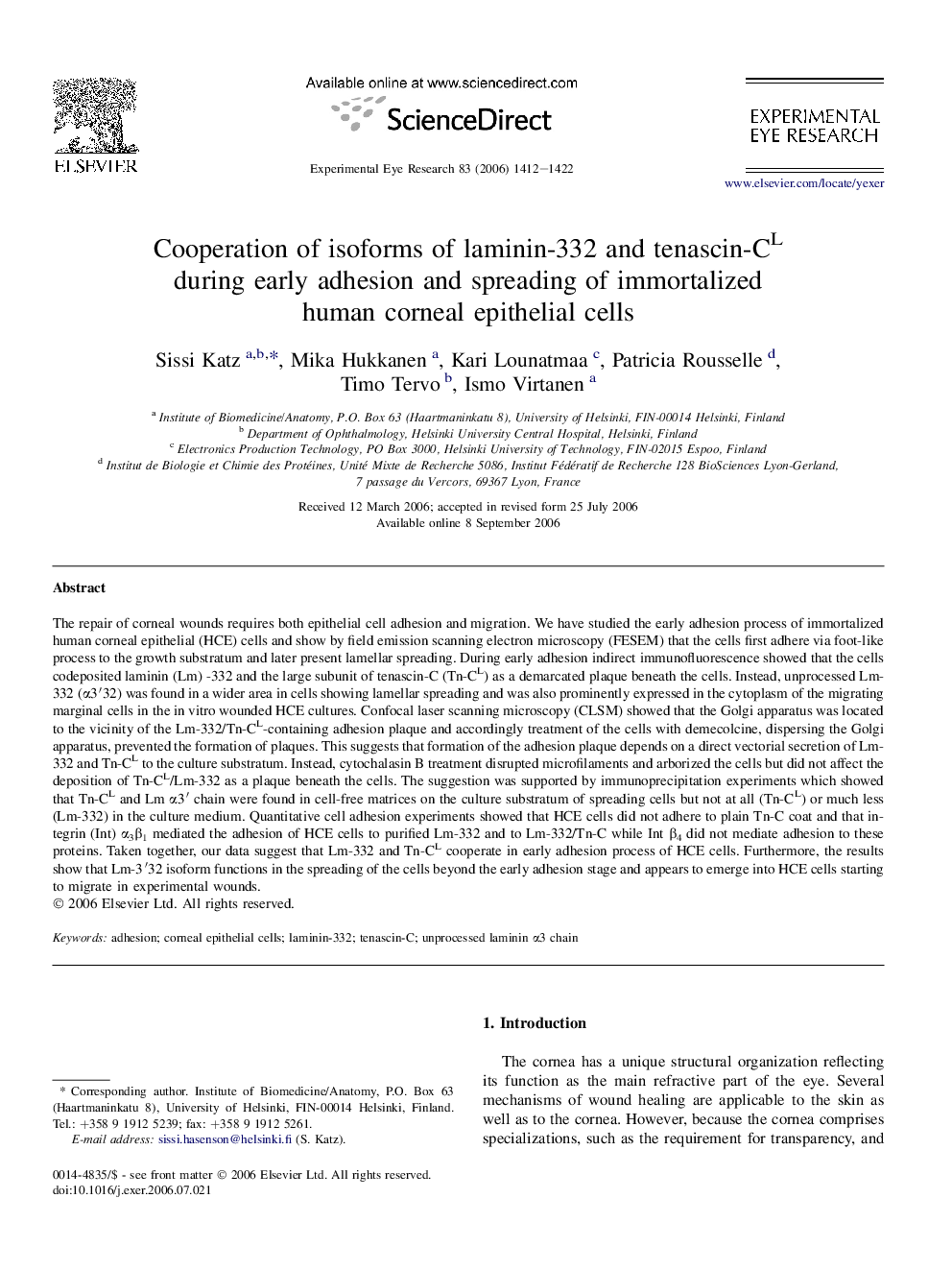| Article ID | Journal | Published Year | Pages | File Type |
|---|---|---|---|---|
| 4012491 | Experimental Eye Research | 2006 | 11 Pages |
The repair of corneal wounds requires both epithelial cell adhesion and migration. We have studied the early adhesion process of immortalized human corneal epithelial (HCE) cells and show by field emission scanning electron microscopy (FESEM) that the cells first adhere via foot-like process to the growth substratum and later present lamellar spreading. During early adhesion indirect immunofluorescence showed that the cells codeposited laminin (Lm) -332 and the large subunit of tenascin-C (Tn-CL) as a demarcated plaque beneath the cells. Instead, unprocessed Lm-332 (α3′32) was found in a wider area in cells showing lamellar spreading and was also prominently expressed in the cytoplasm of the migrating marginal cells in the in vitro wounded HCE cultures. Confocal laser scanning microscopy (CLSM) showed that the Golgi apparatus was located to the vicinity of the Lm-332/Tn-CL-containing adhesion plaque and accordingly treatment of the cells with demecolcine, dispersing the Golgi apparatus, prevented the formation of plaques. This suggests that formation of the adhesion plaque depends on a direct vectorial secretion of Lm-332 and Tn-CL to the culture substratum. Instead, cytochalasin B treatment disrupted microfilaments and arborized the cells but did not affect the deposition of Tn-CL/Lm-332 as a plaque beneath the cells. The suggestion was supported by immunoprecipitation experiments which showed that Tn-CL and Lm α3′ chain were found in cell-free matrices on the culture substratum of spreading cells but not at all (Tn-CL) or much less (Lm-332) in the culture medium. Quantitative cell adhesion experiments showed that HCE cells did not adhere to plain Tn-C coat and that integrin (Int) α3β1 mediated the adhesion of HCE cells to purified Lm-332 and to Lm-332/Tn-C while Int β4 did not mediate adhesion to these proteins. Taken together, our data suggest that Lm-332 and Tn-CL cooperate in early adhesion process of HCE cells. Furthermore, the results show that Lm-3′32 isoform functions in the spreading of the cells beyond the early adhesion stage and appears to emerge into HCE cells starting to migrate in experimental wounds.
